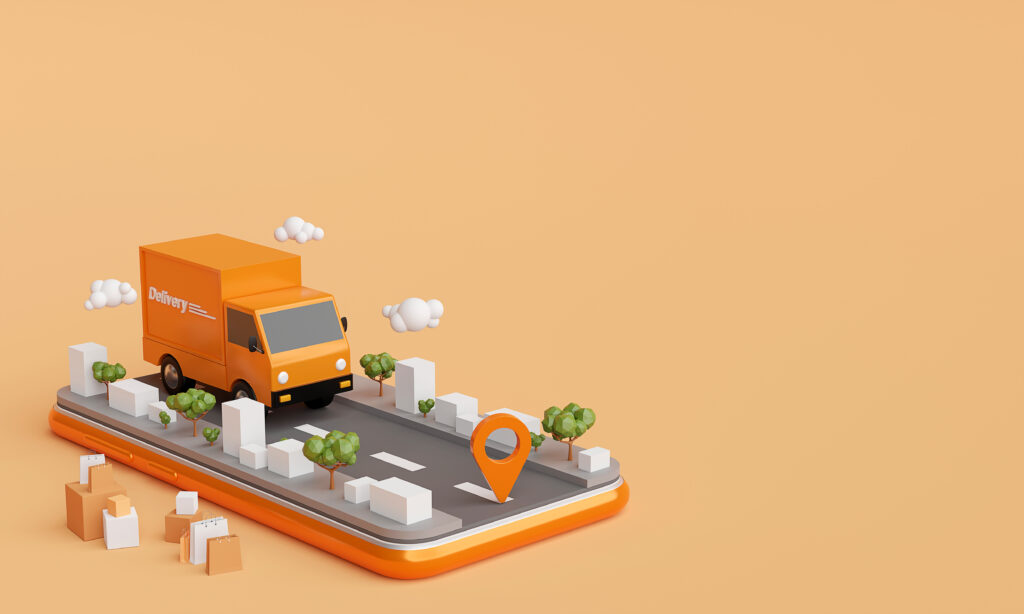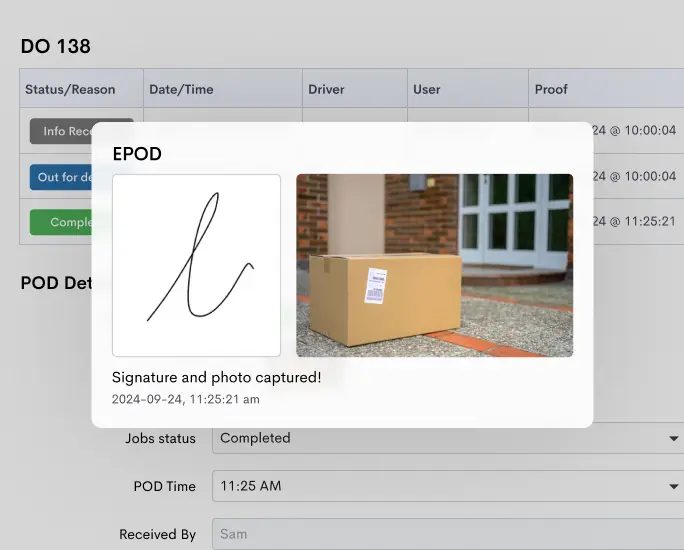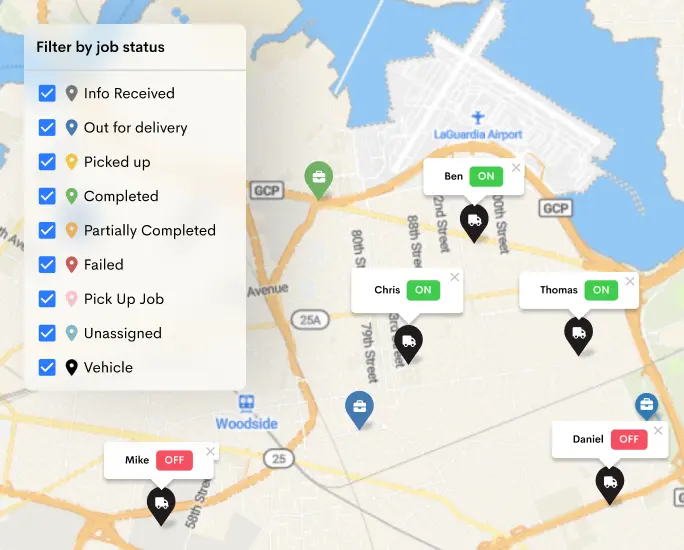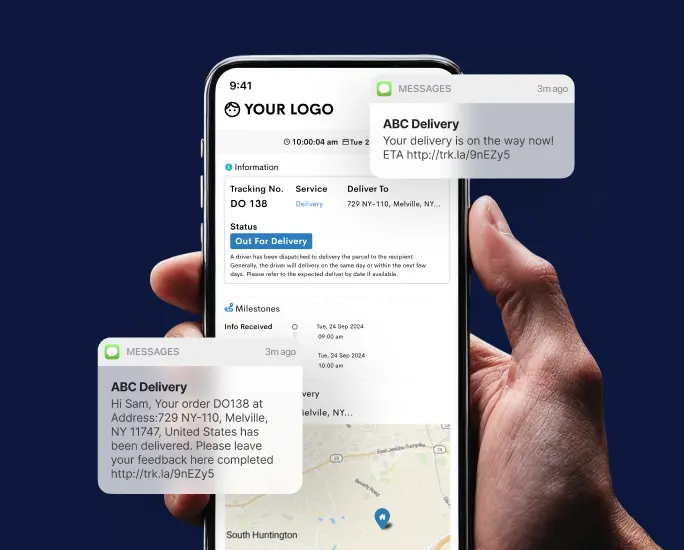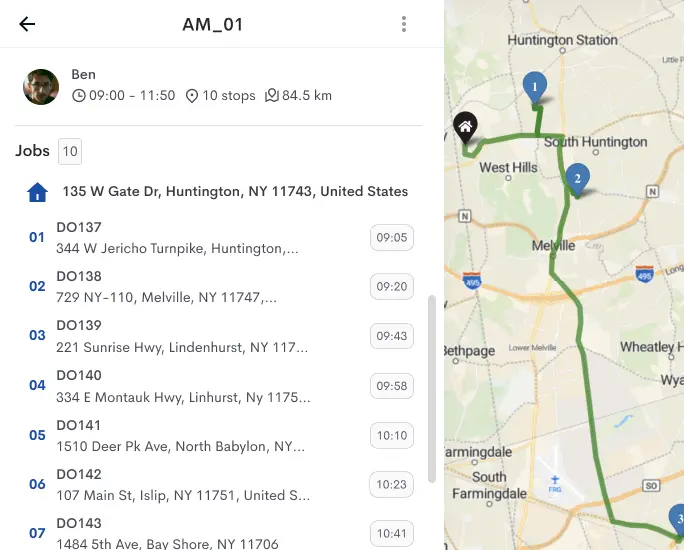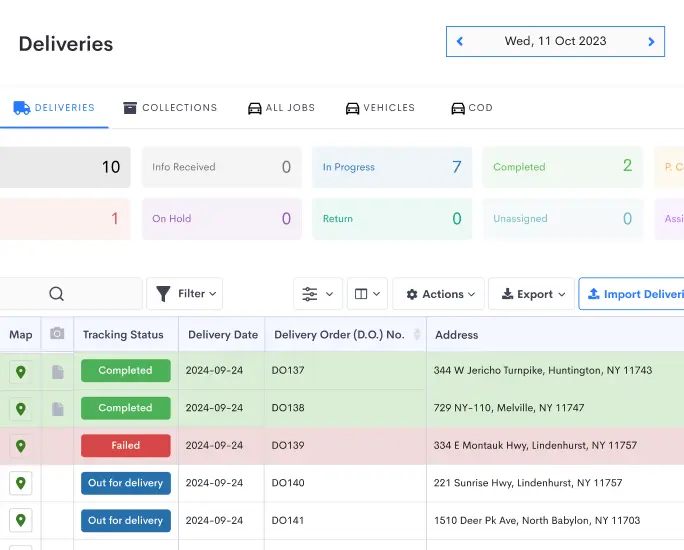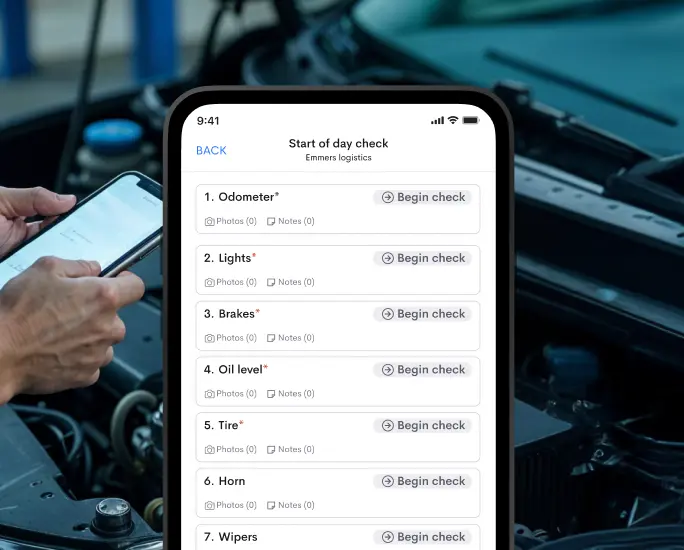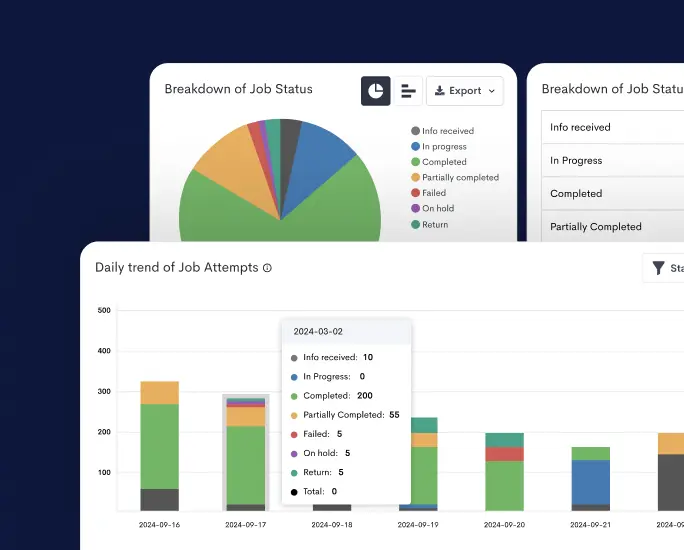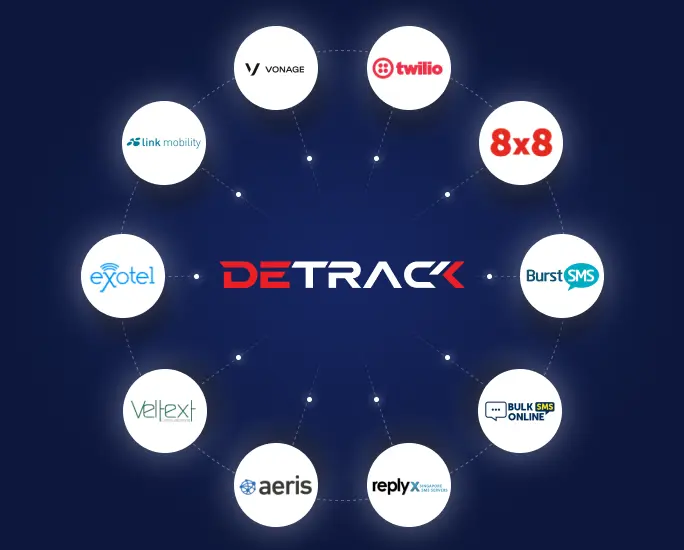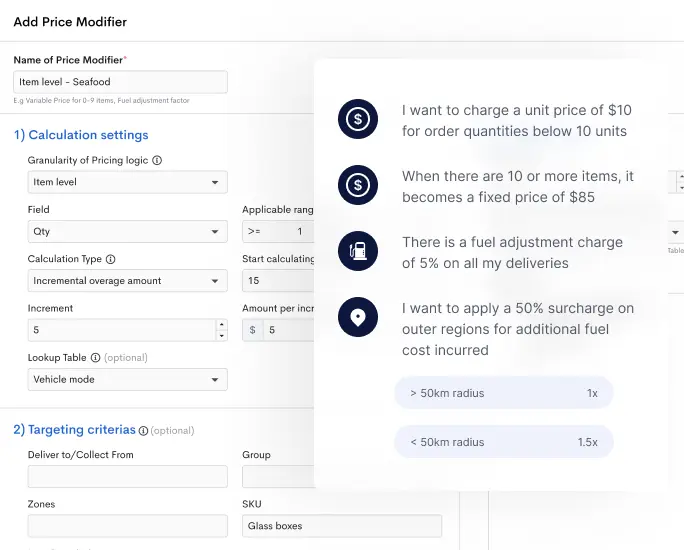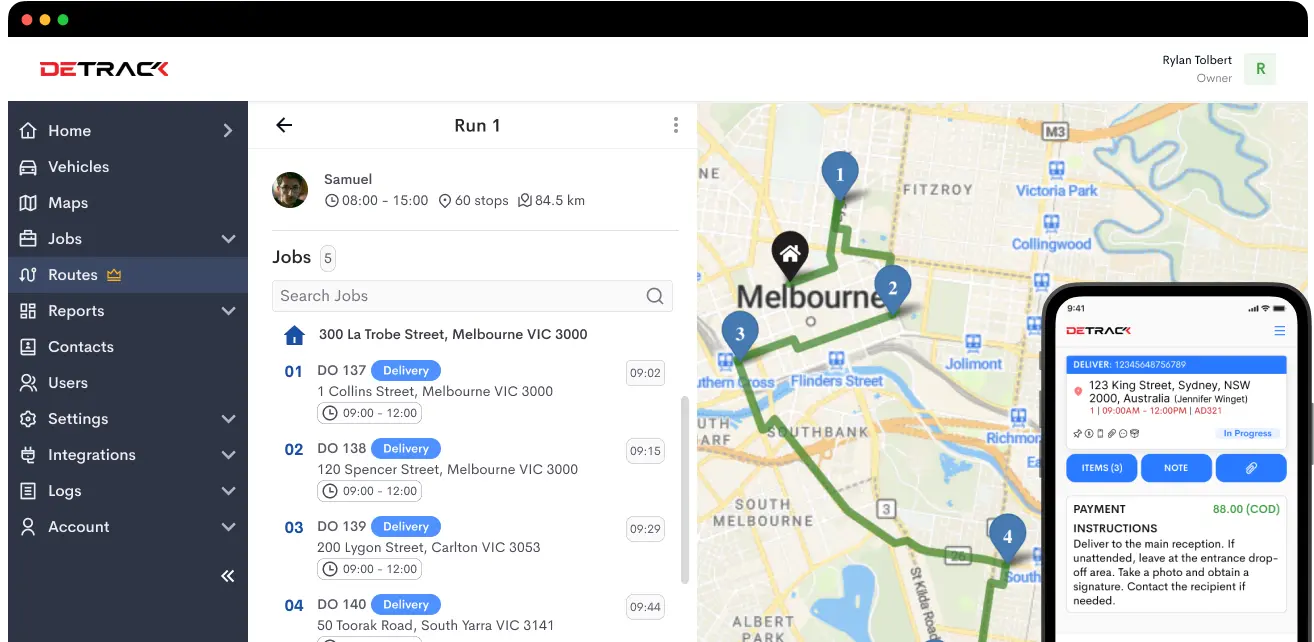In the past few years, the global last mile delivery industry has evolved in size and customer expectations due to the increasing number of online orders from eCommerce businesses. By 2027, the global last mile delivery market is expected to grow to more than 200 billion U.S. dollars from 108.1 billion U.S. dollars in 2020.
Nick DiNatale, CEO and founder of ShipPlug believes the rise of eCommerce businesses has “caused more businesses and delivery companies to get into final-mile delivery”. He shared apps like Uber or DoorDash that “now challenge standard post office models like UPS and FedEx by offering same day delivery.”
Due to the increasing and ever-evolving nature of customer expectations, the last-mile delivery stage is often the most expensive and delicate stage of package delivery. However, eCommerce business owners, logistics managers, and supply chain professionals can readily be on their toes to ensure that customers’ needs are constantly met through delivery management software, AI technology, flexible packaging, and allowing customers to track orders.
In doing so, businesses can perfect their delivery mechanisms for increased customer loyalty, retention, and profit maximization. This comprehensive guide contains all you need to know about the last mile delivery process, from the dispatch to when it gets to the customer. It also includes steps in the last mile process, challenges for logistics companies, ways to optimize the process, and essential trends you shouldn’t miss.
So whether you’re an eCommerce business owner, logistics manager, or supply chain professional, read on for essential insights into this growing industry!
What is Last Mile Delivery?
Last mile delivery is the final stage of the shipping process when packages are delivered to customers’ homes or businesses. The last mile is often the most expensive and time-consuming part of the journey, requiring unique expertise and equipment.
Last mile delivery companies specialize in this final leg of the journey, ensuring packages are delivered quickly and efficiently. It has become even more critical in recent years as e-commerce sales have skyrocketed. With more and more people shopping online, there’s a growing need to improve last mile visibility. As a result, companies have seen a boom in business, and getting packages from point A to point B is now faster and easier than ever before.
What Is The Last Mile Problem?
Rapid changes resulting from a customer’s need to know the exact location of their package as it moves through the supply chain is the major cause of the problems in the last mile. The last-mile delivery problem occurs when the real-time status of a customer’s package shows it’s out for delivery, but the customer still has to wait for long hours before receiving the package.
Put simply, the last mile problem is any delivery delay experienced from when a package leaves the distribution center until it gets to the customer. It usually occurs when there are several stops and delays in the final mile that hinder the expectations of customers.
Sarah Jeffries, the managing director of First Aid Course Leicester shared with us her thoughts about the difficulties in balancing sustainable last mile strategies with customer expectations. She shared with us “the growth of e-commerce has had a profound impact on the expectations customers have for last-mile delivery. They now expect seamless, quick, and transparent delivery processes. This shift in customer expectations, often referred to as the ‘Amazon effect,’ has set a high standard. Customers want to track their deliveries in real-time, know precise delivery windows, and have options for same-day or next-day deliveries.”
Seeing that one of the major expectations of customers includes being able to track packages in real time, long distances between stops that slow down delivery in rural areas becomes a major last mile problem. In urban areas, the situation is often the same due to traffic congestion and complex map layout which poses an even greater issue to logistics companies.
Steps in the Last Mile Delivery Process
There are five vital steps to help ensure your last mile delivery process is smooth while not putting additional strain on your budget and business.
Processing of orders. This involves gathering and organizing all necessary information related to a customer’s order, such as product details, shipping address, and payment method. This step helps ensure that all other subsequent steps go smoothly.
Order Arrives at the Transportation Hub
After an order is processed, it will arrive at the transportation hub — where a courier or delivery service takes possession of the package and begins to prepare the shipment for further transport to its destination. Here, the package is weighed, scanned, and checked for accuracy.
Orders are Designated to Delivery Personnel
Once the package arrives at the transportation hub, delivery personnel are assigned to ensure that the package is delivered on time. Delivery personnel can come in various forms, such as contracted couriers, third- party services, or even in-house staff. Parcels are assigned based on their estimated delivery time, the distance from the transportation hub to the recipient’s address, and other factors
Package is Scanned and Loaded onto Delivery Vehicle
The package is loaded onto a delivery vehicle and sent out for further transport to its destination. This step may vary depending on the capabilities of the courier or service provider. For example, some services offer real-time tracking, while others may not.
Package is Delivered to Recipient’s Address
To improve supply chain efficiency, delivery personnel must ensure that the parcel arrives on time and in perfect condition, as it’s the last step of the last-mile delivery process. They also must check for accuracy to ensure that the right package is delivered to the right person, making sure their signature is collected to complete the delivery and prevent any potential fraud.
The Challenges of Last Mile For Logistics Companies
Explained below are some of the most common challenges logistics companies face during the last-mile delivery for online retailers.
Rising customer expectation
The ultimate aim of the last mile delivery is to complete a customer’s order and satisfy them successfully. However, as Jamie Cantrell, Principal and Division Sales Manager at World Insurance Associates LLC, says, “The increase of eCommerce shopping becoming more of a common practice with COVID-19 has changed everything with the online shopping demand.”
These customers’ demands have made it difficult to keep up with their expectations. Most customers now want a shorter delivery time with reduced charges and efficient customer support. Achieving all that while maintaining profit margins is a significant challenge for last mile logistics companies.
Slow delivery speed
Another major challenge last mile logistics businesses face is the issue of delayed deliveries resulting from slow delivery speed, causing them to incur huge costs when unable to meet delivery deadlines. Last mile delivery is all about getting the goods to the customer in the shortest possible time. Slow delivery speed can damage the reputation of the logistics business.
Lost Deliveries
As with most businesses, when retailers deal with a large volume of orders, it’s quite common for mistakes to happen. The errors that usually occur in the distribution center or warehouse can lead to the misplacement of customers’ deliveries or to the wrong item being delivered.
Additionally, when a customer’s address is wrong in the final mile process or a package’s label is misread, the package could end up at the wrong house. In the worst-case scenario, the items end up with someone who won’t redirect it, leading to lost deliveries.
Returns
In the last mile delivery returns are often common primarily due to wrong orders or damaged packages. The challenge here lies in collecting the packages from the customers and taking them back to the warehouse and the associated loss. Most businesses utilize reverse logistics in transporting the packages back to the manufacturing facility or warehouse. Aside from benefiting the customers, it also increases customer trust and chances of repeat purchases.
Environmental factors
As the demand for last-mile delivery services increases, so does the need to consider environmental factors when planning deliveries. Environmental factors relating to unfavorable weather conditions often affect the delivery process, posing a huge challenge to businesses. Also, there’s an increased regulatory need and pressure for companies to go ‘green’ with their fleets. Mainly because most customers today expect the brands they purchase from to reduce environmental impacts.
Visibility and Tracking
This is perhaps the toughest challenge logistics businesses face during the last mile. To successfully run a last mile delivery operation, companies must constantly know their fleet location for performance monitoring and ensuring nothing happens to the driver and the package being conveyed. It’s made more necessary by the increased requirements of customers to know every detail about their packages’ whereabouts for better transparency and satisfaction.
Most companies use features like tracking numbers and scanning codes that only give information like whether a package is out for delivery or in transit, omitting a crucial area of visibility and tracking that customers need. Introducing more accurate tracking features like estimated time of arrival and driver tracking helps solve the issue and improve customer experience.
The Impact of Poor Last Mile Delivery Services
When a last mile delivery service is poor, it affects the business in different ways, including increasing the operating cost, loss of sales opportunities, and poor customer experience.
Higher operating costs
Last mile delivery is the most expensive part of the entire delivery process, accounting for more than 53% of the total shipping costs. When not optimized or run efficiently, it can lead to extra costs, driving overhead expenses through the roof and reducing profits. For instance, a poor delivery process or structure can result in several failed deliveries which can cause significantly higher operating costs due to multiple redelivery attempts.
Pro tip: See how you can use effective planning and tracking to slash the high cost of the last mile here.
Poor customer experience
Satisfying your customers with a good experience is key to profitability. Failure to deliver customer’s goods in time can lead to displeasure and low repeat customers. With 84% of shoppers saying they’re unlikely to buy from a company again after a failed delivery, there’s a need to keep improving last mile deliveries.
Fast and efficient deliveries are now a powerful leverage for eCommerce retailers, with more research showing that efficient and quick deliveries are the top consideration for most customers.
Lost sales opportunities
When customers feel that their deliveries are taking too long to arrive, there’s an increased chance that they will cancel their order. There’s also a higher chance they end up returning the product after purchasing an equivalent at an offline store closer to them.
Additionally, those customers will cut off patronage, leading to fewer sales opportunities. Therefore, it’s necessary to have a functional and swift delivery process to avoid such instances.
5 Ways to Optimize Last Mile Logistics
Last mile logistics optimization is aimed at achieving a balance of customer satisfaction, delivery efficiency, and cost-effectiveness. Explained are 6 ways to optimize your last mile logistics process.
Multiple Warehouse Locations
Considering that one of the challenges facing the last mile delivery process is the inability or failure to deliver customer’s packages and orders timely, having multiple warehouse locations across different geographical areas closer to customers helps to improve delivery time and reduce fuel consumption as drivers spend less time on the road.
“Companies like Shopify and Amazon are getting into the warehousing space to keep their products close to their customers, allowing for a fast and low-cost last-mile delivery. Managing your inventory over multiple warehouses ensures all items are available to the local market.” — Nick DiNatale, CEO and founder of ShipPlug. By emulating this pattern of multiple warehouses, delivery companies can improve delivery time and number of deliveries completed.
Optimized route planning to cut delivery times
Having inefficient or manual route planning for your last mile delivery can cause delays and even order cancellation due to several hours or days of waiting. However, with last mile route optimization software like Detrack, you can have access to several routes for maximum efficiency. Rather than manually planning routes for several hours, Detrack’s route planner can do it in seconds! Allowing you to minimize the distance traveled, save time, and lower fuel consumption, increasing productivity and cost savings.
Additionally, optimizing your route planning also helps reduce your company’s carbon footprint and increase customer loyalty. By identifying the shortest and fastest possible delivery route, logistics companies can navigate traffic congestion, bad roads, and a complex urban area.
Choose a Reliable Last Mile Service Provider
Last mile service providers often specialize in delivering items to customers’ homes or locations. They’re also known as third-party logistics providers. Having a reliable one as a partner can help improve last-mile logistics. However, when looking to choose a last mile delivery platform for the final mile, it’s essential to confirm that they track vital last mile delivery metrics, as it gives them a competitive advantage and allows for data-driven decisions. It’s also vital to ensure they offer features like real-time order tracking for improved customer satisfaction.
BOPIS
Otherwise known as buy online, pick up in-store, BOPIS is a helpful strategy that can help optimize the fulfillment of last mile delivery. The BOPIS structure works by eliminating the need for customers to wait several hours for their package because the order is fulfilled faster as the items are already available at the local store. When a customer places an order, they can easily pick it up from the nearest store to their location, saving time and allowing for improved inventory management.
Drivers to Provide Proof of Delivery
The goal of every last mile delivery is to deliver the item to the customer successfully. However, conflict and discrepancies often arise from poor information exchange or communication that could lead to returns, costing the business a few extra dollars.
By making your drivers provide proof of delivery as a way to verify the successful completion of a delivery, you can avoid discrepancies and potential disputes between the businesses and customers. In instances where the product is sold on a third-party website, it can help protect the seller from dispute by showing evidence that the item was delivered and received by the customer.
5 Last Mile Delivery Trends You Shouldn’t Miss
With the last mile industry now evolving more than ever, here are some vital trends to keep tabs on to remain competitive in the industry.
Smart Technology for Tracking
With digital advancement increasing by the day, there’s a need to adopt smart technology for actively tracking customers’ packages and giving them rest of mind while their package is en route. The tracking feature offered by delivery management software like Detrack is a game changer and gives you a competitive edge in an ever-demanding industry.
Robotic Delivery
The delivery robot market size was valued at over $500 million in 2022, with an expectation of reaching over 25% CAGR from 2023 to 2032. One of the main issues with last mile delivery is the large costs associated with such as driver wages and warehouse employee wages. By eliminating these costs, last-mile delivery becomes cheaper and, at most times, more efficient. Also, the ability to add a picture of delivery has decreased porch piracy, which ultimately impacts the shipper. As Nick DiNatale says, “The most successful brands will be the ones that can provide the most high-end delivery experience while still being competitive in cost.”
Hybrid Fleet Management Systems
A large part of the inefficiency associated with final mile delivery is due to its on-demand nature that causes the shortage of drivers and trucks as well as empty running trucks and eventually, delayed deliveries. One trend that is gaining increased adoption to solve this issue is the hybrid fleet management system. It provides the businesses extra flexibility by adopting your regular fleet system and a third-party logistics provider to manage deliveries.
Insourcing Deliveries
To cut down costs, businesses are now increasingly adopting insourcing delivery — a term that describes the practice of handling certain delivery operations rather than relying on third-party providers. When properly operated, insourcing delivery allows businesses to scale up their operations, minimize costs, and improve customer satisfaction through superior service
Predictive Shipping
As part of the increased application of machine learning, predictive delivery has gained increased usage in last mile logistics. As the name implies, predictive delivery forecasts future outcomes by merging old data with statistical modeling, prediction models, available data, and machine learning algorithms. In last mile delivery, eCommerce businesses can utilize predictive delivery to create vital insights, boost operations and sales, and improve customer satisfaction.
Be Last Mile Delivery Ready: The Road Ahead
As the delivery world evolves, businesses have to stay updated with the latest features and information to scale up their last mile delivery process. One way to do this is by adopting an all-in-one delivery software that can prepare your business and make your drivers ready for the road ahead.
Detrack is the perfect tool for businesses looking for a powerful and efficient solution to last mile delivery problems. With Detrack’s comprehensive suite of features, businesses can avoid the hassle of manually overseeing their fleet of vehicles.
For example, Detrack has enabled Teak and Mahogany, an exclusive outdoor furniture and accessories retailer based in Singapore, to increase efficiency and customer satisfaction through real-time updates, delivery notifications, and more.
Detrack goes beyond last-minute delivery issues by taking proactive strategies that reduce costs and increase customer satisfaction in the long run. Try Detrack Today and see how it can help improve your last mile deliveries.
Frequently Asked Questions about last mile deliveries
Why is last mile delivery important?
Last mile delivery service is crucial because it represents the final step in the supply chain, ensuring that goods are delivered from a distribution center or fulfillment center to the end-user or customer’s doorstep. It is the customer’s last interaction with the company, making it a significant touchpoint for customer satisfaction and brand perception.
A smooth and efficient last mile delivery can lead to increased customer loyalty and positive reviews, while a poor experience can result in customer dissatisfaction and potential loss of business.
How can we make our last mile delivery process more efficient?
Efficiency in last mile delivery can be achieved through route optimization, real-time tracking, automated sorting, dynamic scheduling, and delivery lockers. These methods streamline the process, reduce errors, and enhance convenience for delivery personnel and customers.
What is the role of technology in last mile delivery?
Technology plays a pivotal role by offering GPS tracking, mobile apps for communication and navigation, data analytics for route optimization, drones and robotics for automation, and IoT sensors for monitoring the conditions of sensitive goods.
How can we manage customer expectations during the last mile delivery?
Customer expectations during last mile delivery can be managed by maintaining clear communication through notifications, providing flexible delivery windows, enabling real-time tracking, and having a responsive customer support system.
What is the difference between a last mile carrier and a final mile carrier?
The terms “last mile carrier” and “final mile carrier” are often used interchangeably and refer to companies or services involved in delivering goods to the end customer’s location. There is generally no technical distinction between the two terms. Both describe the transportation providers responsible for the last leg of the delivery journey, from a distribution center to the customer’s doorstep.
How can last mile delivery be made more sustainable?
To make last mile delivery more sustainable, consider using alternative vehicles like electric or hybrid options, employing bike and foot couriers for urban areas, establishing consolidation points for eco-friendly distribution, optimizing routes to reduce emissions, and promoting reusable packaging choices.
